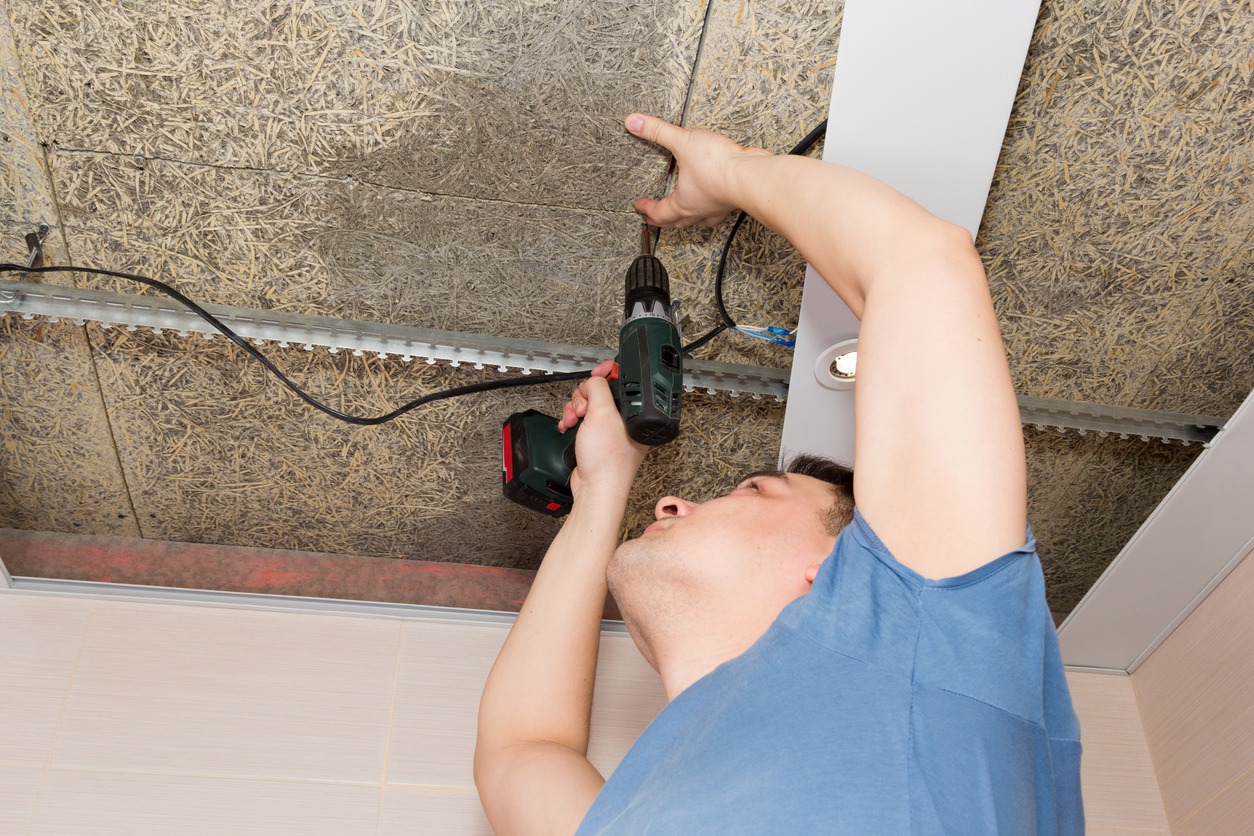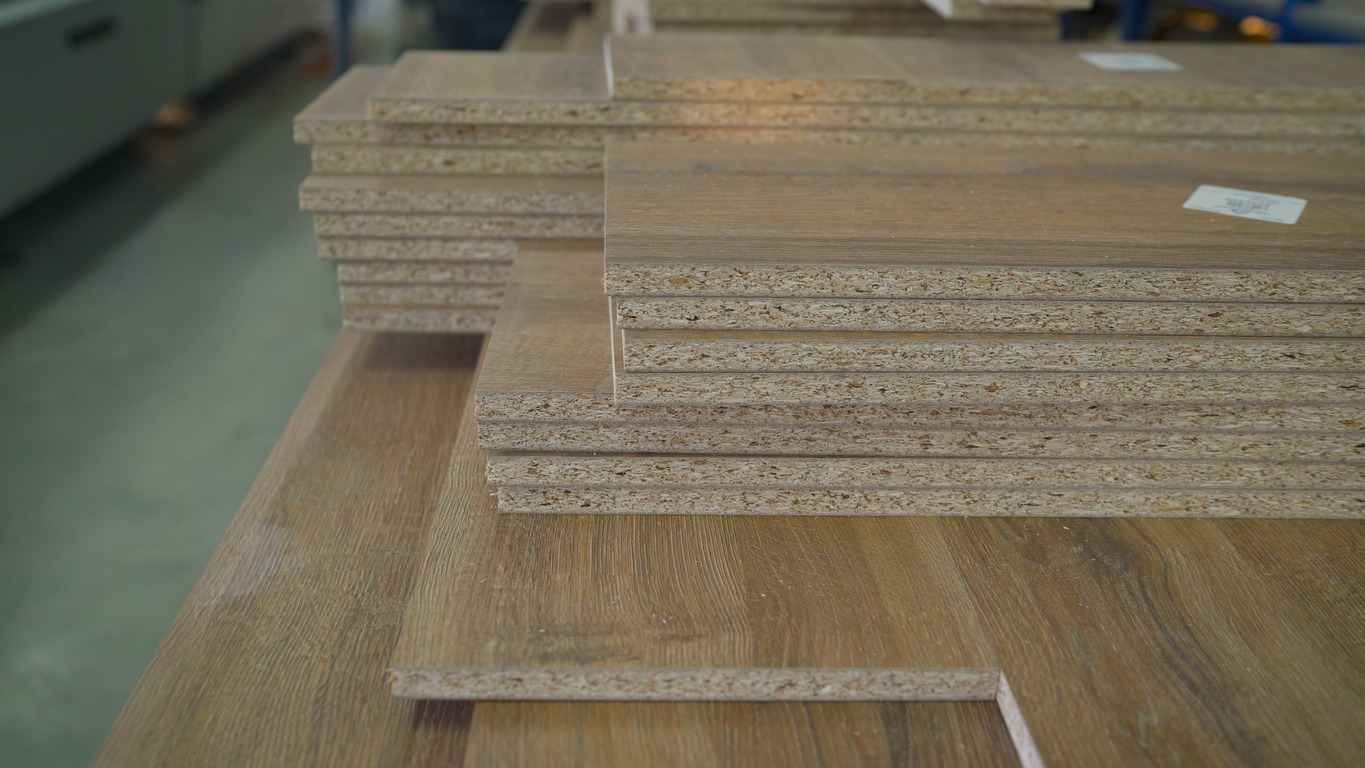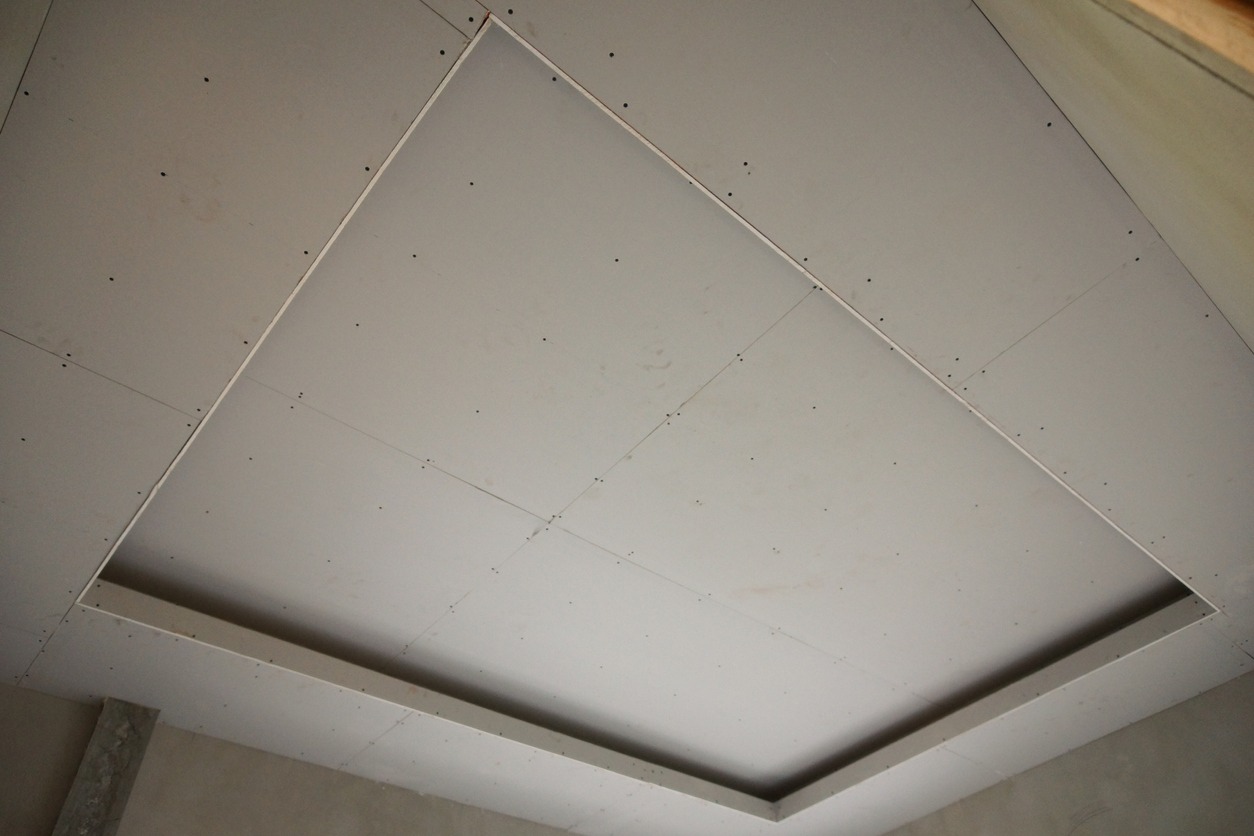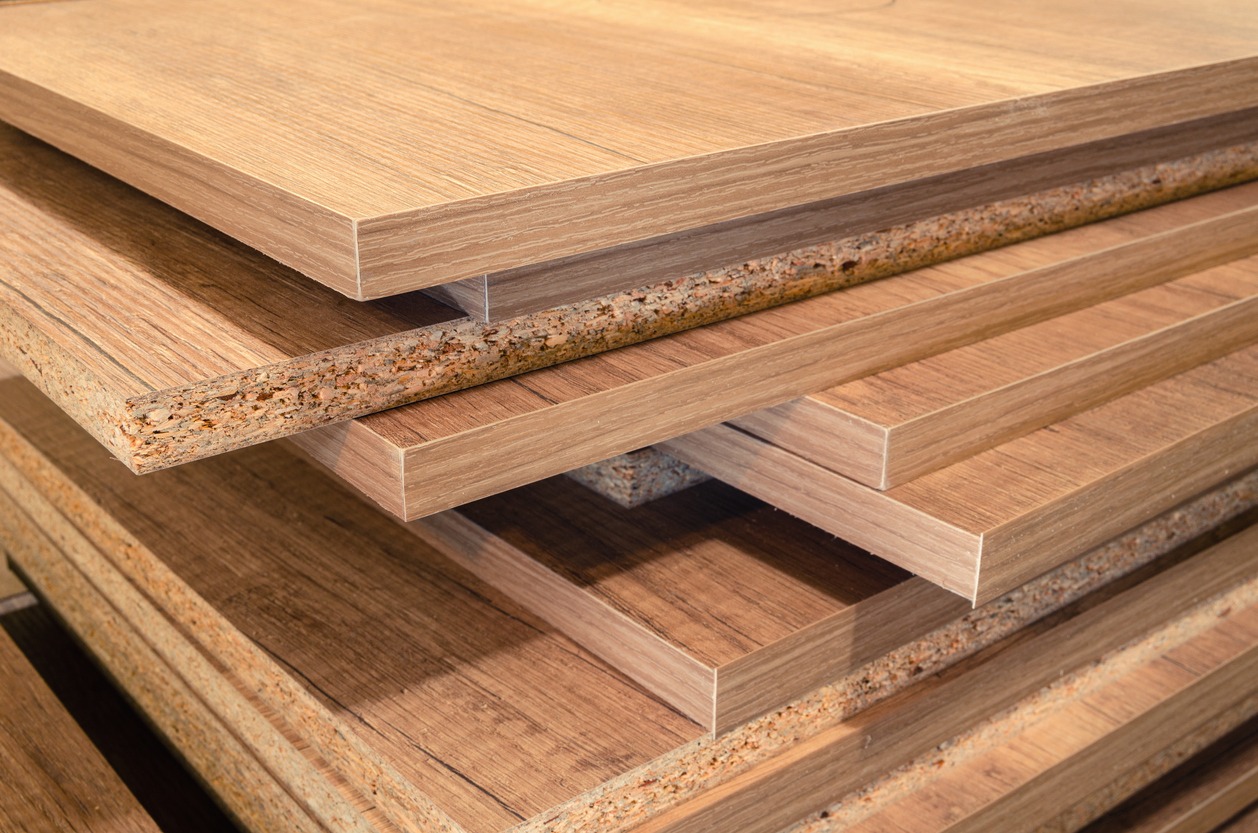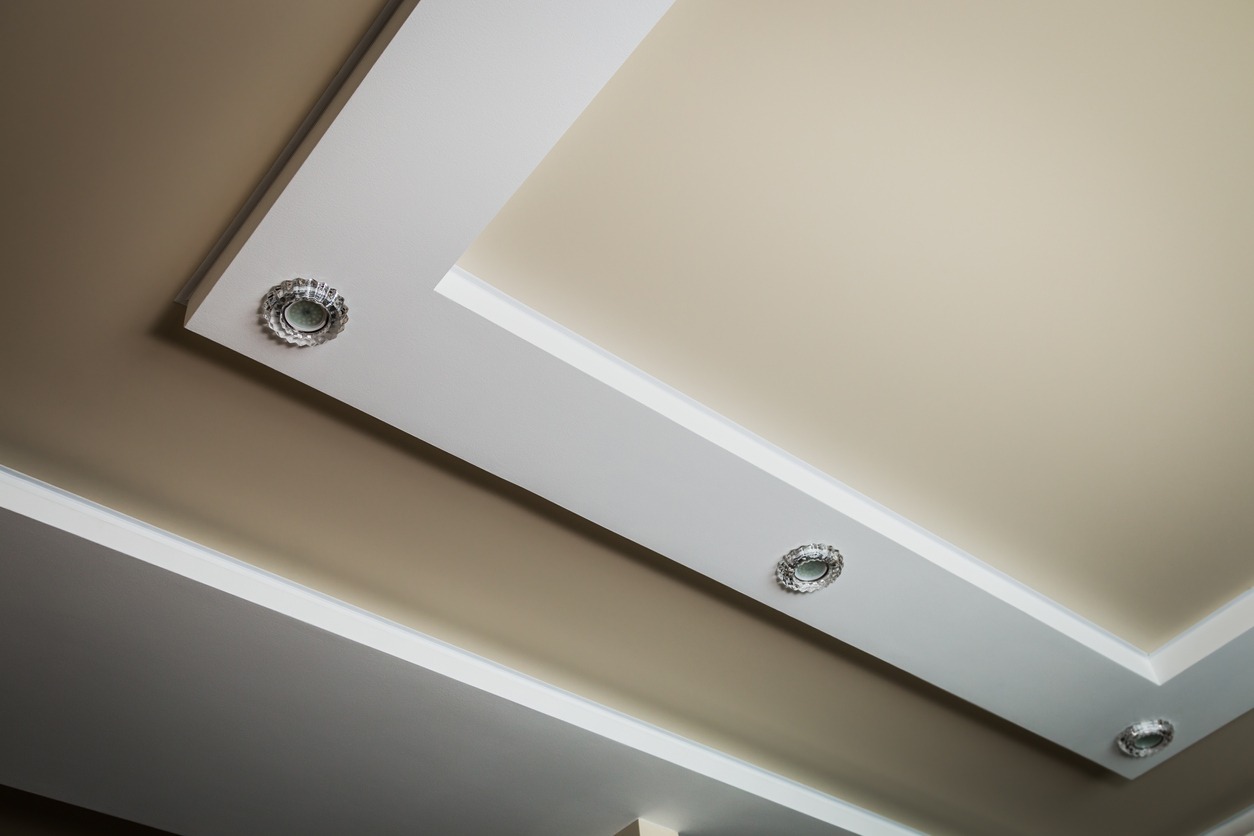There are many different types of materials being used today when it comes to constructing and installing ceilings. People in the modern world are increasingly searching for new materials that they can use for their ceilings. The desire to transform a room into an original space with an innovative shape leads people to discover medium-density fiberboard (MDF) panel ceilings. It is a popular material used in the design of both urban apartments and country homes.
It is possible to create a stunning ceiling surface using MDF panels. But what is an MDF ceiling exactly? If you have the same question in mind, we are here to help you. In this article, we are giving you more information on what an MDF ceiling is, including its composition, characteristics, advantages, disadvantages, applications, maintenance, and more.
What is a Medium-Density Fiberboard?
Medium-density fiberboard (MDF) is a timer-based, engineered sheet material with the density and hardness of solid wood. It is among the most versatile building materials available because it is inexpensive, homogenous, and durable. With these, it can be used as a low-cost alternative to timber in many carpentry and woodworking applications, such as for creating ceilings.
MDF is a very modern material, and it only recently entered large-scale commercial production in the 1980s. It is made from compressed wood fiber and binder, and it can be faced on both sides with a veneered or very fine smooth-painted finish. MDF reveals a uniform, fine-grade structure denser than plywood when cut.
Physical Properties of MDF
The finished MDF is usually made of at least 80% wood fiber, with the remaining constituents being water, urea-formaldehyde resin glue, and paraffin wax. It is much stronger and denser compared to particle boards like chipboard, plywood, and hardboard.
However, while it has a tough surface, MDF has poor moisture resistance, and lower grades might swell when saturated. But there are also moisture-resistant versions and high-density and low-density fiberboards available today.
Manufacturing MDF
Generally, MDF is made up of glue and sawdust. It is created using residual matter from softwoods or hardwoods that have been broken down into fine fibers and then combined with resin and wax binder. Utilizing alternative binders like melamine urea-formaldehyde can help improve the moisture resistance of MDF.
Manufacturers may also incorporate different materials into the timber mix, such as bamboo, wood, straw, carbon fibers, scrap, saw-mill waste, recycled paper, and polymers. The mixture will be pressed into sheets and allowed to cool under high temperature and pressure. At the present time, the production of MDF has been shifting slowly to more environmentally friendly materials or non-toxic binders.
MDF Supply
MDF can be supplied in its raw state or with decorative facings and smooth-sanded surfaces. It also comes in different sizes, often 2,440 x 1,220 mm, with thicknesses from 6 to 25 mm or more. It is often supplied as moisture-resistant, fire-retardant, or general-purpose.
What are Medium-Density Fiberboard (MDF) Ceilings?
One area where MDF has found great utility is ceiling installations. MDF ceiling planks or panels are cost-effective, durable, and versatile when it comes to creating stylish and functional ceilings in homes, commercial buildings, and institutional structures.
MDF ceiling panels are composite and have a consistent structure. They are strong and can be drilled, cut, and finished in different ways. There are white-painted planks that can render a room fresh and modern or warm and authentic. In addition to painting them white, they are also available in different textures and finishes, such as beadboard, weathered wood, linen-like textures, and natural wood-look finishes like bamboo, cherry, maple, and pine.
Due to its versatility, MDF has become the material of choice for various residential and commercial applications. Aside from using it for ceilings, it has also been used for walls, cabinetry, doors, and even laminate flooring, furniture, and paneling. MDF can also outperform real wood on many fronts, including environmental impacts, as they are made primarily of wood residuals or, in other words, recycled wood.
MDF may also outperform solid wood under certain conditions. Solid wood cracks or warps when exposed to changes in temperature or humidity. Heat treatment and compression, on the other hand, help keep fibers in MDF evenly distributed. Although MDF can still warp under certain conditions, it is more stable and less likely to contract and expand in humidity and heat compared to solid wood.
MDF Ceiling Panel Dimensions
Wooden ceiling panels have different requirements and characteristics than MDF wall panels. Ceiling plate dimensions for repair in private homes and apartments may differ. Finishing the ceiling within the apartment may necessitate the use of a smaller slab.
MDF ceiling panels have the following characteristics:
- They have medium-density and various linings and designs.
- They are not bulky and are easily installed.
- The panel can be any color, allowing you to design the ceiling in whatever layout.
It is best to use reel-type workpieces to create a ceiling from MDF panels in a medium-sized room. Their length ranges from 2400 to 3600 mm, and their width ranges from 147 to 301 mm. They can be attached with a construction stapler or liquid nails.
The lining of the ceiling with MDF boards lets the material be fitted to the required dimensions, but due to their large size, they are extremely difficult to install independently. You can pick the right materials for the size based on the reviews.
DIY MDF Ceiling Panels
If you have experience installing and repairing ceilings, you can make a ceiling out of MDF panels by hand. If you do not wish to spend money on professional services, you can look into the self-manufacturing and ceiling installation of MDF panels. Medium-Density Fiberboard panels do not require special preparatory work before installation, but you must remove rust, fungus, or mold from the ceiling with antiseptic agents.
Advantages of MDF Ceilings
MDF ceilings have several advantages that make them a popular choice for both builders and homeowners. If you are curious about these advantages, below are some of them:
Cost-Effective: MDF is an affordable material compared to other ceiling materials like plaster or wood. This makes it an ideal option for homeowners who want to achieve a stylish and functional ceiling without costing too much.
Versatile Design and Finishes: The ceiling panels of MDF come in different designs and finishes, including textured, smooth, or embossed surfaces. This makes it easy to match the ceiling with the overall décor of a room or space.
Durability: MDF is a sturdy ceiling material that is resistant to warping and bending. This makes it a great choice for ceilings that need to withstand heavy loads.
Easy Installation Process: MDF ceiling panels are also very easy to install. They can be cut to fit any size or shape. Therefore, installation time is decreased, and the overall project can be completed faster.
Eco-Friendly and Sustainable: Since MDF is made using recycled wood fibers, it is, therefore, an eco-friendly and sustainable material choice for ceilings.
Disadvantages of MDF Ceilings
While MDF ceilings have a lot of advantages, there are also some disadvantages that you need to consider if you are thinking of using this material for your ceiling installation. Below are some of the potential drawbacks of MDF ceilings:
Susceptibility to Moisture Damage: You need to keep in mind that MDF is not as moisture-resistant as other ceiling materials like metal or PVC. Therefore, if it is exposed to moisture, it can swell or even disintegrate. This makes it a less ideal choice for humid environments like bathrooms.
Limited Structural Support Capacity: MDF is not as strong as metal or wood, and it has a limited weight-bearing capacity. Therefore, these ceiling panels should not be installed in areas that require structural support or heavy loads.
Health Hazards: MDF is a material made using adhesives that contain formaldehyde, which may cause health problems if inhaled over an extended period. Therefore, it is very important to choose low-emission MDF or take enough precautions when installing these ceilings to minimize formaldehyde exposure.
Not Suitable for Outdoor Installations: You have to note that MDF ceiling panels can’t be installed outdoors as they are susceptible to moisture and humidity. They won’t be able to withstand the different weather conditions, and temperature changes outdoors.
MDF Ceiling Applications
MDF ceiling panels are versatile materials that can be used in different applications. Below are the common applications of MDF ceilings:
Residential Homes: MDF ceiling panels are a great choice for homeowners who are aiming to add a touch of style and sophistication to their living spaces. They can use ceiling panels in bedrooms, living rooms, dining rooms, and other parts of the home to create a beautiful and functional ceiling.
Commercial Buildings: It is also a good idea to use MDF ceilings in commercial buildings like offices, retail stores, and restaurants. They are a cost-effective and easy-to-install option for creating an attractive and functional ceiling.
Institutional Buildings: MDF ceilings are also among the popular options for institutional buildings like hospitals, schools, and government offices. It’s because they are easy to clean, resistant to wear and tear, and very durable, making them ideal for high-traffic areas.
Recreational Facilities: MDF ceiling panels are also commonly used in recreational facilities like spas, gyms, and community centers. They can be designed to match the overall aesthetics of the facility and can withstand the wear and tear associated with frequent use.
MDF Ceiling Maintenance
It is actually relatively easy to maintain MDF ceilings. Below are some of the best tips that we can give in order to keep an MDF ceiling in good condition:
Avoid Moisture: Always remember that MDF is not moisture-resistant and may warp or disintegrate when exposed to water. Therefore, it is important to always keep it dry and not expose it to excessive moisture to keep it in good shape.
Regular Cleaning: Use a soft cloth or duster to clean your MDF ceiling regularly. This will help remove dust and prevent the buildup of dirt and grime. Do not use abrasive cleaners or rough cleaning tools that may scratch or damage the surface of the ceiling.
Avoid Direct Sunlight: Direct sunlight may cause the color of an MDF ceiling panel to fade over time. Therefore, it is best to avoid exposing your MDF ceiling to direct sunlight or install blinds or curtains to prevent the sunlight from reaching the ceiling.
Repair Any Damage Immediately: In case your MDF ceiling gets damaged or develops chips and cracks, make sure that it gets repaired immediately to prevent further damage or deterioration.
Use the Right Sealants: Applying the right sealants or coatings may help protect an MDF ceiling from moisture and other environmental factors. You just need to make sure that the sealants you use are compatible with MDF and that you follow the instructions for application.
Conclusion
MDF ceilings are a practical and attractive option for a wide range of applications. It can be used in residential homes, and as well as in commercial and institutional buildings. With their durability, versatility, and affordability, MDF ceiling panels are sure to continue to be a popular choice for ceiling installations. We hope this post helped you learn more about medium-density fiberboard (MDF) ceilings.

